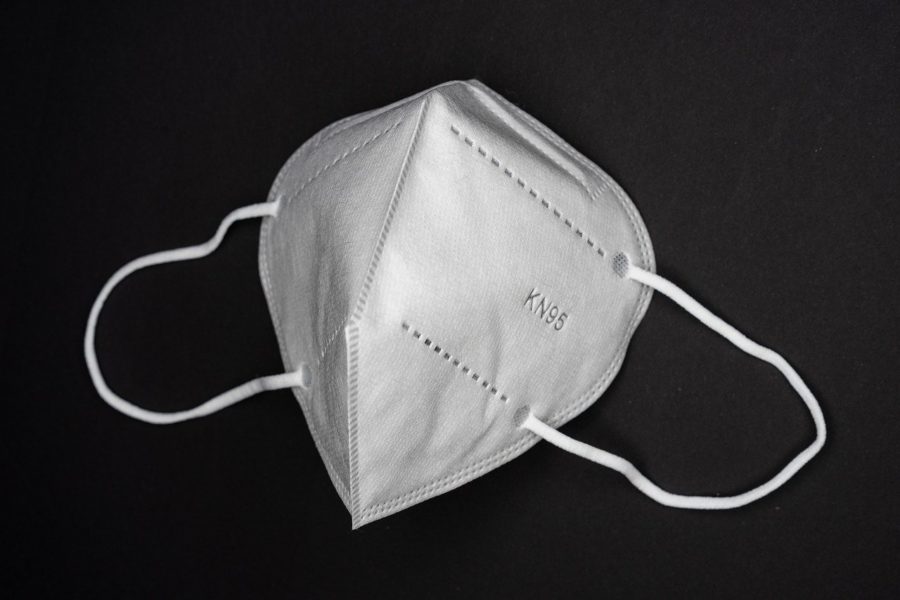Omicron mask effectiveness
“Omicron.” “Variant.” “COVID-19.” These days, those words appear in conversation more often than they ever have before. Given a recent outbreak at RUHS, how can students and staff protect themselves? Perhaps everyone’s first answer is “by wearing a mask,” but not all masks are created equal. So what types of masks are there? And which one does its job best?
“There are cloth masks, and then there are surgical masks. And then there are respirators, which the common ones out there are N95 or KN95 masks,” Dr. Shahrzad Rafiee, emergency medicine physician at Long Beach Memorial Medical Center, said.
Cloth masks are a popular, but less effective, option. According to an infographic created by the American Conference of Governmental Hygienists, if an infected person is not wearing a mask and the receiver is wearing a cloth mask, it takes 20 minutes for COVID to transmit – only five minutes more than if neither person was wearing a mask.
“They’re easy to use, they’re easy to find. They’re better than nothing, but they’re not as effective as surgical masks or N95’s,” Dr. Rafiee said. “They don’t seal around your mouth and nose properly. They don’t have multiple layers that filter out particles, so they’re not as effective. But if you’re going to have no mask versus a cloth mask, I think a cloth mask is better. You’re protecting yourself against something, but not against aerosolized small particles [like COVID-19].”
Surgical or three-ply masks are also very common, but still not so good at keeping wearers safe, according to Dr. Rafiee.
“They’re also easy to use, and they’re kind of breathable. But the seal around your mouth and nose is not very effective,” Dr. Rafiee said. “So there are three layers, and they do provide protection, but compared with N95’s, they’re not as effective.”
She’s right. The aforementioned infographic shows that wearing a surgical mask around a maskless, COVID-19-positive person only adds 15 extra minutes of safety against COVID compared to if you weren’t wearing a mask at all.
Lastly, Dr. Rafiee says that multi-layer respirators are the best defense.
“They are more effective at filtering out particles of smaller size, and they also provide a seal around your nose and mouth so it doesn’t let things get in from the sides,” Dr. Rafiee said.
Again, the infographic backs her up: wearing an ordinary N95 (the kind that comes in boxes of 20 or 30) in the presence of someone infected with COVID-19 increases transmission time from 15 minutes without any mask to one hour and 15 minutes with an N95. And if the infected person and the receiver are both wearing N95’s, transmission time skyrockets to six hours and 15 minutes. And the great thing about them?
“The N95’s that are coming out now that you can buy are more comfortable. The first several generations of N95’s are really uncomfortable to wear and they are not really reasonable or well-designed. So it’s hard to tolerate them. But some of the ones that I’ve run into loop around your ears instead of going around your head, and they leave a little bit more space with the seals,” Dr. Rafiee said.
According to Dr. Rafiee, although surgical masks do a good job protecting against the original virus and multiple variants, they don’t work very well at all against Omicron.
“Omicron, compared to Delta, multiplies, like, 70 times faster inside of the human respiratory tract than Delta does, and it reaches higher levels in the respiratory tract tissues about 48 hours after you’re infected. It’s incredibly transmissible between people and causes illness in a shorter amount of time than Delta. So, when the transmission is so high, surgical masks don’t have an effective seal around the nose and mouth, and they are also three layers of substance, whereas the N95’s make a seal around your nose and mouth, so they’re a more effective barrier. Also, I believe there are five layers that are built into the N95 mask, which are more effective against particles getting into your respiratory tract when you’re wearing them,” Dr. Rafiee said.
So. It’s time for the big question: How can all this information be applied, and how can masks be worn to the wearer’s advantage? Well, according to Dr. Rafiee, “In super high-risk environments like the ER [emergency room], the ideal combination seems to have been an N95 mask plus a surgical mask.” It provides the most protection while still providing the wearer with adequate air.
“I hope and I feel that this might be part of the endgame of the pandemic. We’re in this Omicron mess, but if enough people get it, and if enough people build immunity, it’s going to stop spreading. It’s going to kind of close the loop on itself, and you can go back to life as normal,” said Dr. Rafiee. “So let’s try to get through it and put it behind us.”

Hi! I'm Marlie. I'm a Freshman Staff Writer (this is my first year in Journalism). I love writing about a lot of things and I love reading about very specific things. And in case you were wondering,...



